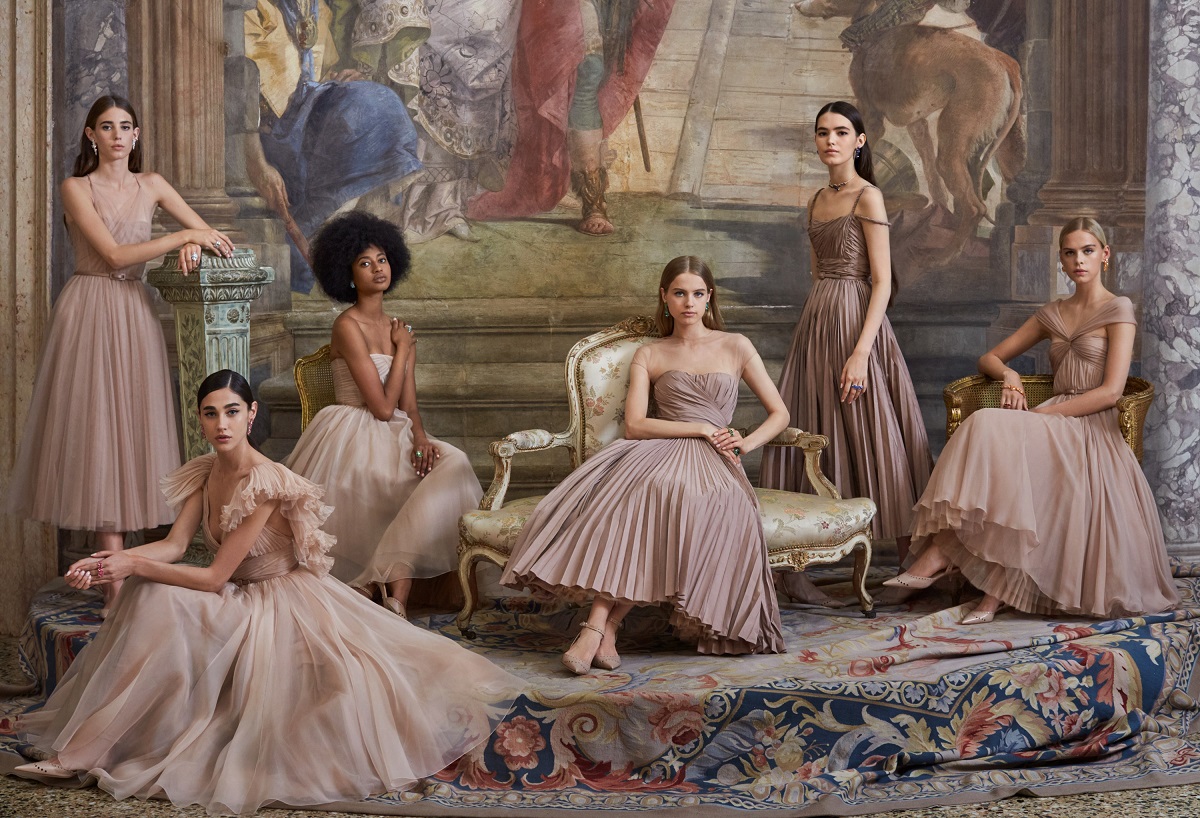J’Aime Gem Dior: Victoire de Castellane Celebrates 20 Years of Dior Jewelry in Venice
This week in Venice, Victoire de Castellane celebrated 20 years as the creative director of Dior Fine Jewelry, but what you may not know is that she didn’t have a predecessor.

This week in Venice, Victoire de Castellane celebrated 20 years as the creative director of Dior Fine Jewelry, but what you may not know is that she didn’t have a predecessor. In 1999, LVMH chairman and CEO Bernard Arnault hired de Castellane (who was working for Chanel at the time) to develop and launch Dior Joaillerie. Two decades and 80 boutiques later, business is booming and de Castellane has earned legions of devoted clients and collectors (and even more Instagram fans). From day one, she’s taken inspiration from the life and work of Christian Dior himself, drawing on his love of flowers, his penchant for lace, his pink childhood home in Granville, France, their shared fascination with Versailles, and even the chairs Dior used in his early shows (de Castellane cleverly rendered the humble caning motif in gold). At the same time, de Castellane has established signatures of her own, like asymmetry (rarely does a pair of her earrings actually match), hidden symbols, and tiny apparatuses within a piece of jewelry, like a concealed watch or a movable drawer that slides beneath a ring.
Dior chairman and CEO Pietro Beccari saw the 20-year milestone as an opportunity to celebrate de Castellane’s success in a big way, so he brought couture clients and members of the press to Venice for two nights of special events. On Tuesday, guests arrived at the Palazzo Labia (where Dior hosted a masquerade ball just a few weeks ago) and discovered what looked, surreally, like a living painting: models in taupe and beige Dior dresses lounging on antique furniture, surrounded by Tiepolo’s famous frescoes. Each woman also wore several pieces of jewelry from de Castellane’s new collection, titled Gem Dior (gem being a play on J’aime, French for “I love.”) The balletic dresses were designed specifically by Maria Grazia Chiuri for the occasion, and the soft, neutral tones of the tulle and pleated taffeta seemed to blend into the paintings. Of course, the palette also helped to highlight the women’s colorful jewels. Gem Dior is an expansive collection of no less than 99 rings, earrings, necklaces, hand pieces, watches, and more, with stones spanning the full rainbow: rubies, diamonds, emeralds, cyan tourmaline, pink sapphires, tsavorite, tanzanite, rubellite, purple garnets, grenadine spinels . . . the list goes on. One model wore a pair of cluster earrings—one with emeralds, the other with cyan tourmalines—while another wore glittering dégradé gems in pink and orange, plus a stunning orange spessartite hand piece (i.e., a cuff that fits around your palm).
It was the first time a Dior jewelry collection had ever been shown on models in a formal presentation. Later in the evening, after guests sat down for dinner in various dining rooms, each model changed into a black dress (also designed by Chiuri) and walked through the rooms, mimicking Monsieur Dior’s intimate couture shows in the ’50s and ’60s. To see the jewelry move and catch the light was very different from viewing it behind glass or in a vitrine, particularly because de Castellane designs her pieces to actually be worn and loved—not locked away. “Showing the jewelry with the dresses, suddenly [there’s this] modernity,” she said. “I think women have a lot of feelings about what they wear—we want to be romantic, but we can also be modern. We have different ways of being.” Or different facets, if you will.
Unlike many of her past collections that were designed around a specific theme—the roses of Granville; hidden corners of Versailles; antique lace in Dior’s ateliers—de Castellane described Gem Dior as “abstract,” with a focus on the actual stones and their cuts and colors. “I wanted to play with the idea of looking at all of my previous collections and zooming in, so the stones become pixelated,” she explained. “I call it abstract, but also organic, because nothing is symmetrical or geometrical. I imagined that [each piece] was like a mineral.” She cited sugar crystals as a reference as well as pyrite, or “fool’s gold,” the irregular chunk of bronzy material you might remember from a childhood rock collection. The way those rocks and minerals grow in nature influenced the jumbled, “wedged-together” stones of various cuts—some pieces combined baguettes with pears, or ovals with marquises and emeralds—set in prongs so every facet of the stone was visible.
For collectors of de Castellane’s jewelry, that shift toward something a bit more natural was an exciting surprise. By the next day, many pieces had already been sold or reserved. The multicolored and dégradé items were understandably popular: one double-finger cocktail ring featured 10 different stones, including diamonds, emeralds, and purple garnets, while a pair of mismatched earrings had tourmalines, yellow sapphires, rubies, and pink spinels piled on top of each other. Each was utterly precious, but de Castellane sees her women wearing them in an almost casual way (mixed with pieces from her past collections, too). “When I started making jewelry, I thought women only wore it for special occasions. But now I see more and more women wearing jewelry every day—really!” she said, gesturing to her colleagues at the table. “I think women see jewelry as cool now, and it’s very personal. To me, it’s precious makeup. You can have no makeup on, but if you’re wearing earrings, suddenly they brighten you.”
Looking toward 2020 and the next decade, de Castellane believes women’s relationship with jewelry will only grow. Much of that comes down to them taking on more leadership roles and becoming increasingly outspoken in culture and politics. “Women are buying jewelry for themselves more and more,” she said. “Many of our clients are women, and, for me, it’s a victory. When women buy jewelry for themselves, I think they’re also buying protection. The jewelry gives them power. Before, men bought it for them as a gift, and they had the power. Now, you don’t need to wait for a man to buy you jewelry.”
EMILY FARRA - VOGUE


































